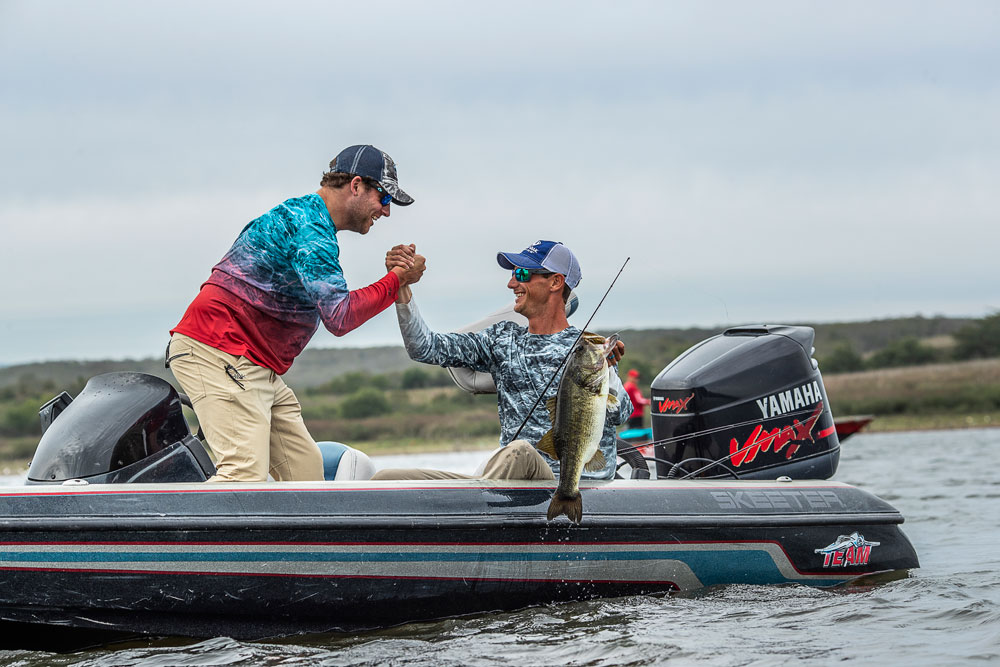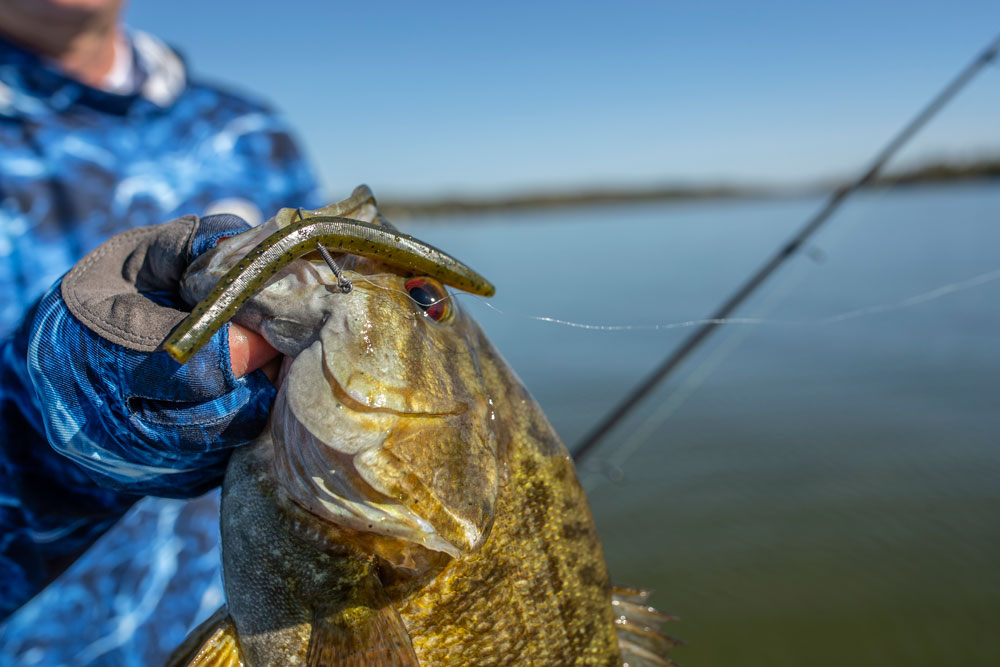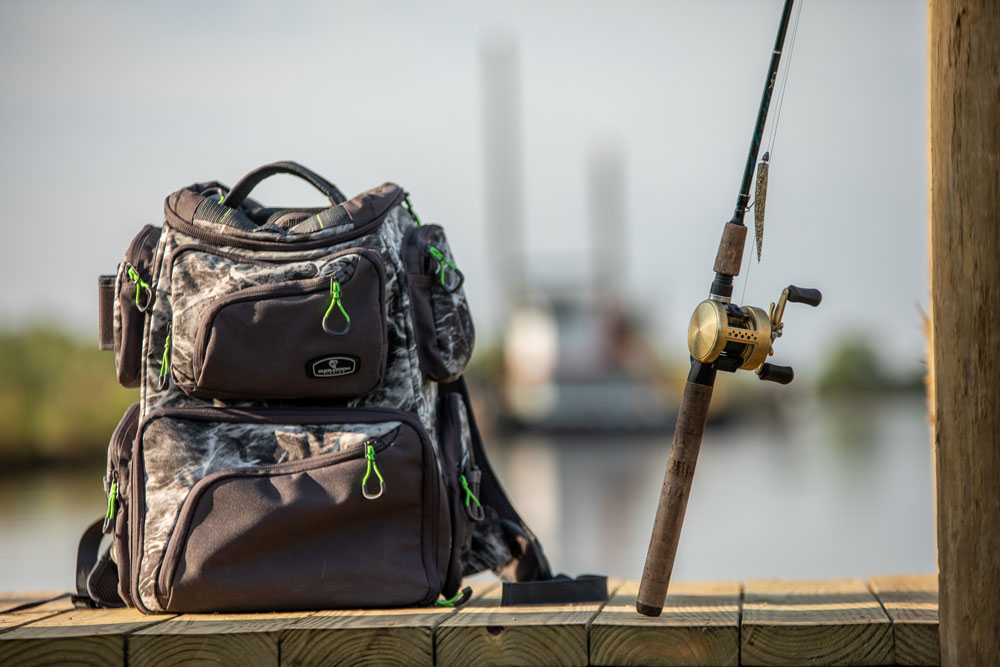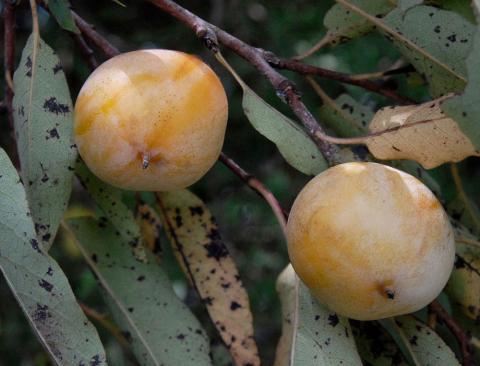Although summer and early fall may be the most comfortable time to go fishing, many devoted anglers will continue fishing long into the late fall and even winter. In many areas, a sunny day above 60° F is warm enough for an outdoor adventure.
However, the problem is that the temperature changes drive fish deeper underwater or farther south toward warmer water. Fish behavior also changes during this time due to changes in their metabolism. If the water in your area drops below 50° F, you may have a hard time getting fish to bite at all.

Luckily, there are ways you can deal with these changes and still haul in some fish. Best practices vary depending on the type of fish you’re going after, but, in general, you’ll need to vary both your equipment and your fishing location.
Research Local Conditions
First, check on conditions specific to your area and the fish species nearby. Atlantic Salmon aren’t the only fish who migrate. Although some fish migrations are subtle, they may still affect your usual fishing spot.
Your state fish & wildlife agency may have some tips and pointers. Double-check their website to make sure there are no seasonal restrictions in effect later in the year. Brush up on bass fishing tips and any other species-specific information you need.
Fish During the Afternoon
In most seasons, you can get a good catch in the morning, and the early hours are the best time to avoid sunburn. However, the lower temperatures also mean lower fish metabolism and less activity. Fish will be sluggish in the morning and will only start to feed later in the day.
Waiting for the water to warm up pays off, especially if the previous days have been chilly. Fish may launch into a feeding frenzy if they’ve been deprived of warm waters for a few days beforehand.
The exception to this rule is catfish hunting. Nighttime remains the best time to go after catfish, who remain deep in the water around creek mouths through the late fall months.
Move to the Backs of Creeks
If you’re unsure of the best spot in your area, head upstream. Calmer waters may have more insects near the surface of the water, which attracts more fish.
The back of a creek may also have more trees around, attracting insects and baitfish. Although too much shade will drop water temperatures enough to make fish sluggish, a little foliage will likely still have baitfish around.
Aim for Hiding Spots
As water temperatures drop, fish are more likely to congregate in and around green vegetation like pondweed. As long as you don’t get your bait caught in the vegetation, these areas can be rewarding for snagging hungry fish.
Try pulling your lure along just above the tops of the vegetation. This may take some practice, especially if the water is cloudy. You may have more success with this tactic in areas you frequently fish, as you know which areas to target even if you can’t see clearly.
You can also aim for docks, rocky areas, and anywhere else that fish are likely to hide. Even if an area seems too rocky for trophy fish to be hiding, there could be baitfish hiding within, which consequently attracts larger fish.

Get a Different Lure
The water color changes in many creeks and rivers as the leaves fall off the trees and decay in the water. Usually, the water becomes cloudier, which requires either a brighter and shinier lure or a very dark lure that has a stark silhouette. However, some avid anglers report that their usual green pumpkin lures still work great due to their vivid color.
Fall fishing tactics often involve bigger lures, especially when going after bass. You can try combining multi-colored and metallic lures or a spinner jig to improve visibility.
Whatever you decide, make sure to pull the lure along slowly. Bass and most other fish are attracted to large meals, but they don’t want to have to chase something. A slow-moving target allows them to conserve their energy.
Fish Deeper Than Before
Although fish may be attracted closer to the surface of the water on sunny days, they will typically be deeper than before. This is partly because of how quickly the shallower waters can cool off and freeze once the air temperature drops.
Start by pulling your lure very close to the bottom, and then slowly raise it six inches with each pass. Although this is very similar to fishing year-round, you’ll need even more patience in the fall.
Bass fishing is the exception to this rule, especially in climates that are still mild in the late fall. Bass will aggressively pursue schools of baitfish around vegetation, which tends to grow in shallower waters. However, you may still have to experiment with the depth, depending on how cold the water is.

Start Saltwater Fishing
Creeks and rivers may freeze, but the ocean is rough and deep enough that it remains ice-free in much of North America. If you’ve never been saltwater fishing before, consider taking a trip to the nearest ocean or saltwater creek.
You’ll need new equipment to prevent salty residue from ruining your freshwater gear, but the investment is well worth it. Snapper, striped bass, cobia, and other species can still be plentiful, depending on your location. If you’re feeling adventurous, you can even try shark fishing.
Be Patient and Use the Right Gear
Above all else, late fall anglers must be patient. There is merit to switching up tactics, but make sure to give your new methods a chance before tweaking them further. Fish are fickle even during the best of weather, but the dropping temperatures make them even more careful to conserve their energy.
With some time, practice, and advice from local anglers, you can often make your best catches in the fall. Embrace the new challenge and take great notes on what works so you can replicate and even improve your success in future years.






























